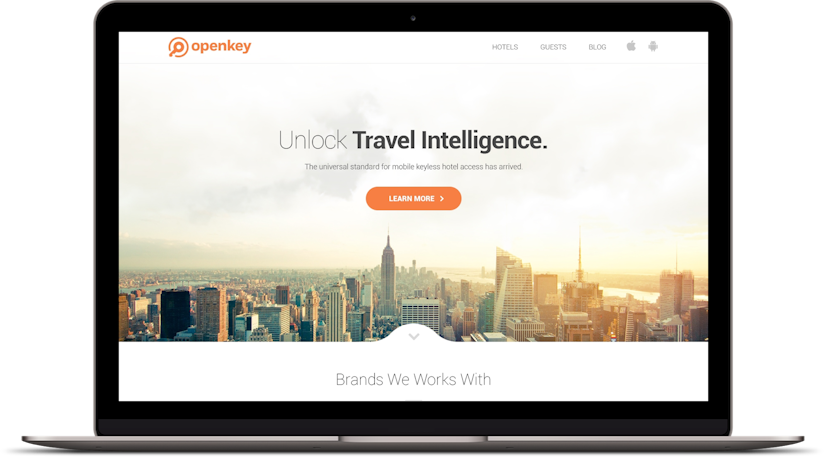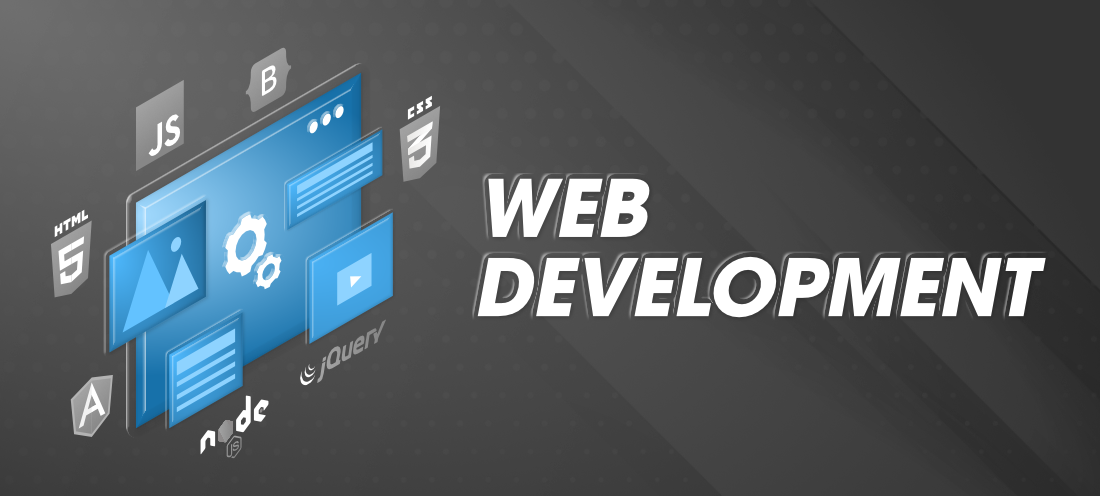All Categories
Featured
Table of Contents
- – Web Design Blog - Webdesigner Depot Webdesigne...
- – Web Design Certificate - Web Development Cert...
- – Web Design - The First 100 Years - Idle Words...
- – Ciw Web Design Series Tips and Tricks:
- – Web Design - Entrepreneur Tips and Tricks:
- – Web Design Certificate - Web Development Cert...
- – Web Designer: Learn The 9 Skills You Need In...
- – Web Design Tutorials By Envato Tuts+ Tips an...
- – Learn Web Design With Online Courses, Classe...
- – Web Design And Applications - W3c Tips and T...
- – Website Design - Best Ecommerce Web Design B...
Web Design Blog - Webdesigner Depot Webdesigner Depot Tips and Tricks:
Quick summary Usability and the energy, not the visual style, determine the success or failure of a site. Given that the visitor of the page is the only person who clicks the mouse and therefore decides whatever, user-centric design has established as a basic method for successful and profit-oriented website design - web design frederick md.
and the energy, not the visual style, identify the success or failure of a website. Because the visitor of the page is the only individual who clicks the mouse and for that reason decides whatever, user-centric style has actually ended up being a basic method for effective and profit-oriented web design. If users can't use a function, it might as well not exist.
g. where the search box should be put) as it has already been performed in a number of short articles; instead we concentrate on the approaches which, used effectively, can result in more sophisticated style decisions and simplify the process of perceiving presented details. Please notice that you might be thinking about the usability-related posts we've published before: Concepts Of Good Site Style And Reliable Web Design Guidelines, In order to utilize the principles appropriately we initially require to comprehend how users interact with websites, how they believe and what are the standard patterns of users' habits.
Web Design Certificate - Web Development Certificate Program Tips and Tricks:
Visitors glance at each new page, scan a few of the text, and click the very first link that captures their interest or vaguely resembles the thing they're looking for. In reality, there are large parts of the page they don't even take a look at. Most users search for something intriguing (or useful) and clickable; as quickly as some promising prospects are discovered, users click.
If a page offers users with high-quality material, they are prepared to compromise the material with ads and the design of the website. This is the reason that not-that-well-designed websites with premium material gain a great deal of traffic over years. Material is more essential than the style which supports it.

Users don't read, they scan. Notice how "hot" locations abrupt in the middle of sentences. This is common for the scanning procedure. Extremely simple concept: If a site isn't able to fulfill users' expectations, then designer stopped working to get his task done correctly and the business loses cash. The greater is the cognitive load and the less instinctive is the navigation, the more willing are users to leave the website and search for options.
Web Design - The First 100 Years - Idle Words Tips and Tricks:
Neither do they scan website in a direct style, going sequentially from one site area to another one. Instead users satisfice; they pick the very first sensible option. As quickly as they find a link that looks like it might result in the objective, there is a very excellent opportunity that it will be immediately clicked.
It doesn't matter to us if we understand how things work, as long as we can utilize them. If your audience is going to imitate you're creating signboard, then design great signboards." Users wish to be able to manage their browser and rely on the constant information discussion throughout the website.
If the navigation and website architecture aren't instinctive, the number of enigma grows and makes it harder for users to comprehend how the system works and how to receive from point A to point B. A clear structure, moderate visual ideas and quickly recognizable links can help users to discover their course to their goal.
Ciw Web Design Series Tips and Tricks:

Since users tend to explore sites according to the "F"-pattern, these 3 declarations would be the first aspects users will see on the page once it is filled. The style itself is easy and user-friendly, to comprehend what the page is about the user requires to browse for the answer.
Once you've accomplished this, you can communicate why the system is useful and how users can benefit from it. Don't Waste Users' Persistence, In every task when you are going to use your visitors some service or tool, try to keep your user requirements minimal.
First-time visitors are willing to, not filling long web forms for an account they may never utilize in the future. Let users explore the site and find your services without forcing them into sharing private data. It's not reasonable to require users to get in an e-mail address to check the function.
Web Design - Entrepreneur Tips and Tricks:
Stikkit is a best example for an easy to use service which requires nearly nothing from the visitor which is inconspicuous and soothing. Which's what you want your users to feel on your website. Obviously, Mite needs more. The registration can be done in less than 30 seconds as the type has horizontal orientation, the user does not even need to scroll the page.
A user registration alone suffices of an obstacle to user navigation to minimize inbound traffic. 3. Handle To Focus Users' Attention, As websites supply both static and dynamic content, some elements of the user interface bring in attention more than others do. Clearly, images are more appealing than the text simply as the sentences marked as vibrant are more attractive than plain text.
Focusing users' attention to specific areas of the website with a moderate usage of visual components can assist your visitors to obtain from point A to point B without thinking of how it in fact is expected to be done. The less enigma visitors have, the they have and the more trust they can develop towards the company the website represents.
Web Design Certificate - Web Development Certificate Program Tips and Tricks:
Aim For Feature Direct exposure, Modern web designs are generally slammed due to their technique of directing users with aesthetically appealing 1-2-3-done-steps, large buttons with visual effects and so on. From the style perspective these elements in fact aren't a bad thing.
The website has 9 primary navigation choices which are visible at the very first glance. What matters is that the material is well-understood and visitors feel comfy with the method they communicate with the system.
Instead a cost: simply what visitors are looking for. An ideal service for effective writing is touse short and concise expressions (come to the point as quickly as possible), usage scannable design (classify the material, utilize several heading levels, use visual elements and bulleted lists which break the circulation of consistent text blocks), usage plain and unbiased language (a promo does not require to sound like ad; offer your users some affordable and unbiased factor why they ought to utilize your service or stay on your website)6.
Web Designer: Learn The 9 Skills You Need In 2022 - Skillcrush Tips and Tricks:
Users are hardly ever on a site to take pleasure in the design; furthermore, in many cases they are looking for the information despite the style - web design frederick md. Strive for simpleness instead of intricacy. From the visitors' point of view, the finest website style is a pure text, without any advertisements or more content obstructs matching exactly the inquiry visitors utilized or the material they have actually been looking for.
Finch plainly presents the details about the website and gives visitors an option of alternatives without overcrowding them with unneeded material. Not just does it assist to for the visitors, but it makes it possible to view the information presented on the screen.
Complex structures are harder to check out, scan, evaluate and deal with. If you have the choice between separating 2 style sectors by a noticeable line or by some whitespace, it's generally better to use the whitespace option. (Simon's Law): the much better you handle to offer users with a sense of visual hierarchy, the much easier your material will be to view.
Web Design Tutorials By Envato Tuts+ Tips and Tricks:
The exact same conventions and rules should be used to all elements.: do the most with the least amount of cues and visual elements. Clarity: all components must be created so their meaning is not uncertain.
Conventions Are Our Good friends, Traditional design of website components doesn't result in an uninteresting web website. It would be a functionality problem if all sites had different visual discussion of RSS-feeds.
understand what they're getting out of a site navigation, text structure, search positioning etc. A typical example from usability sessions is to equate the page in Japanese (assuming your web users do not know Japanese, e. g. with Babelfish) and offer your functionality testers with a job to find something in the page of various language.
Learn Web Design With Online Courses, Classes, & Lessons Tips and Tricks:
Steve Krug recommends that it's better to, but make the most of conventions when you don't. 10. Test Early, Test Typically, This so-called TETO-principle must be applied to every web design task as use tests frequently provide into substantial problems and issues connected to a given layout. Test not far too late, not insufficient and not for the incorrect factors.
Some essential indicate remember: according to Steve Krug, and screening one user early in the task is much better than testing 50 near completion. Accoring to Boehm's very first law, errors are most frequent throughout requirements and design activities and are the more pricey the later they are removed.
That indicates that you develop something, test it, repair it and then check it again. There may be issues which have not been discovered during the first round as users were practically blocked by other issues.
Web Design And Applications - W3c Tips and Tricks:

This holds for designers also. After you've dealt with a site for few weeks, you can't observe it from a fresh perspective any longer. You understand how it is developed and for that reason you know precisely how it works you have the knowledge independent testers and visitors of your site would not have.
It can be linked to other areas such as graphic style, user experience, and multimedia arts, but is more appropriately seen from a technological standpoint. It has ended up being a big part of individuals's everyday lives. It is difficult to picture the Web without animated graphics, various designs of typography, background, videos and music.

During 1991 to 1993 the Web was born. Text-only pages could be viewed utilizing a basic line-mode internet browser. In 1993 Marc Andreessen and Eric Bina, created the Mosaic internet browser. At the time there were several browsers, however most of them were Unix-based and naturally text heavy. There had been no integrated method to graphic style elements such as images or sounds.
Website Design - Best Ecommerce Web Design By Shopify Tips and Tricks:
The W3C was produced in October 1994 to "lead the Internet to its full potential by establishing common procedures that promote its evolution and guarantee its interoperability." This prevented any one business from monopolizing a propriety web browser and shows language, which might have modified the result of the Internet as a whole.
As this has actually occurred the innovation of the web has actually likewise moved on. There have actually likewise been substantial modifications in the method individuals use and access the web, and this has changed how sites are developed.
Learn more about Lovell Media Group LLC or TrainACETable of Contents
- – Web Design Blog - Webdesigner Depot Webdesigne...
- – Web Design Certificate - Web Development Cert...
- – Web Design - The First 100 Years - Idle Words...
- – Ciw Web Design Series Tips and Tricks:
- – Web Design - Entrepreneur Tips and Tricks:
- – Web Design Certificate - Web Development Cert...
- – Web Designer: Learn The 9 Skills You Need In...
- – Web Design Tutorials By Envato Tuts+ Tips an...
- – Learn Web Design With Online Courses, Classe...
- – Web Design And Applications - W3c Tips and T...
- – Website Design - Best Ecommerce Web Design B...
Latest Posts
Web Design And Applications - W3c Tips and Tricks:
Web Design Blog - Webdesigner Depot Webdesigner Depot Tips and Tricks:
53 Web Design Tools To Help You Work Smarter In 2022 Tips and Tricks:
More
Latest Posts
Web Design And Applications - W3c Tips and Tricks:
Web Design Blog - Webdesigner Depot Webdesigner Depot Tips and Tricks:
53 Web Design Tools To Help You Work Smarter In 2022 Tips and Tricks: